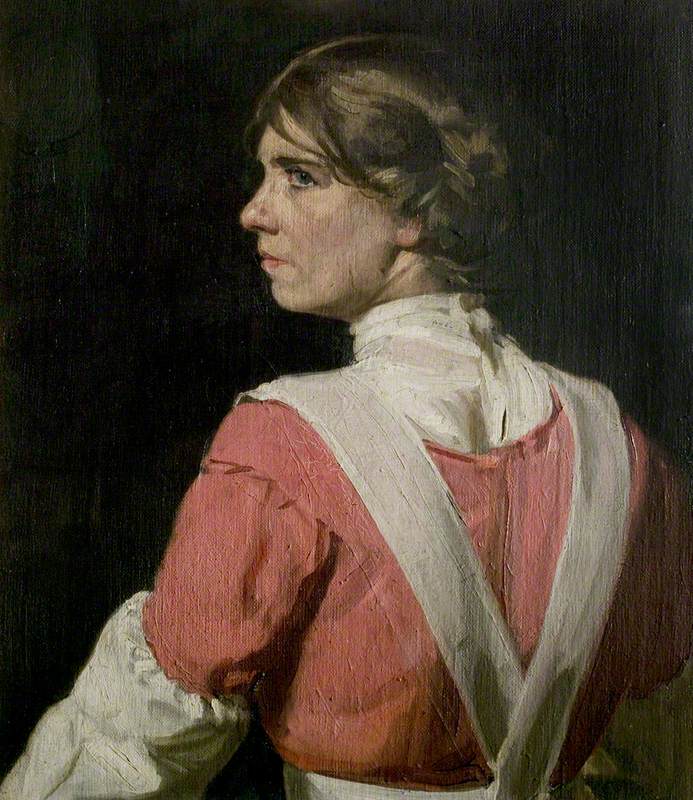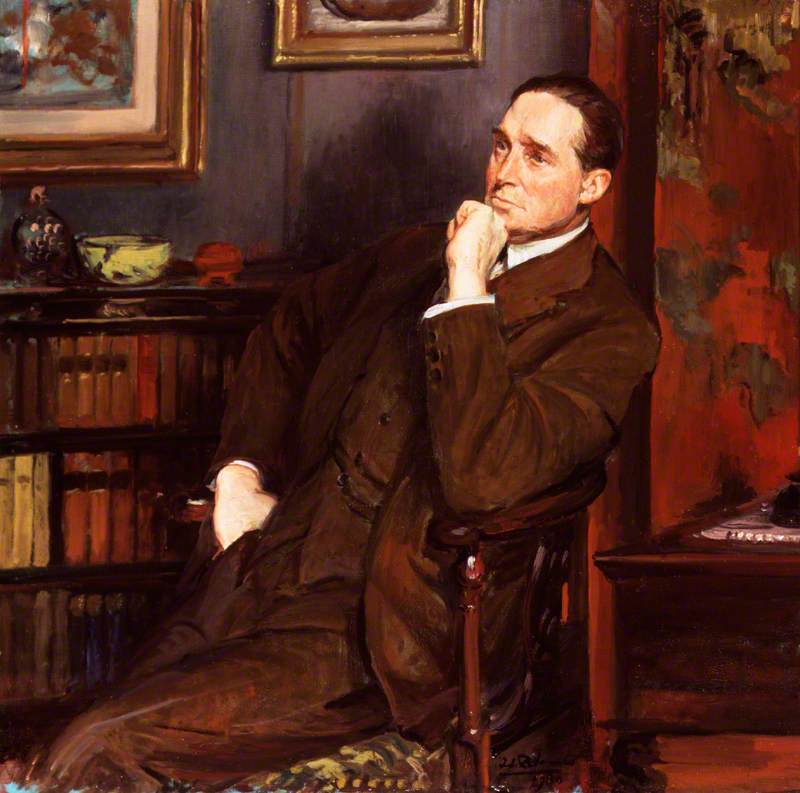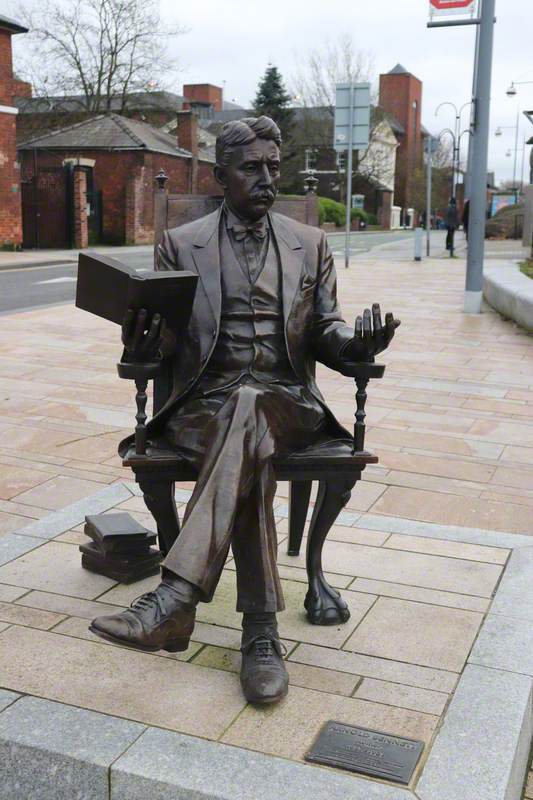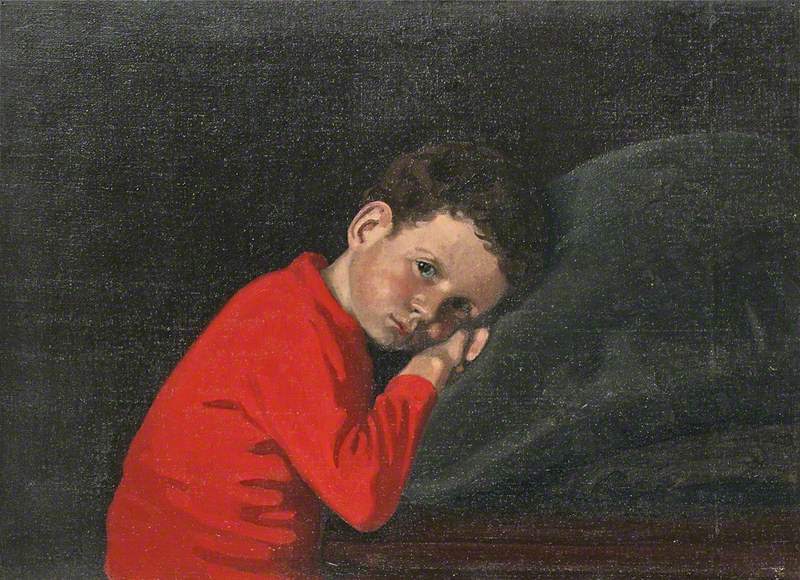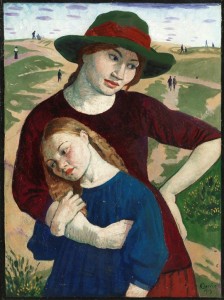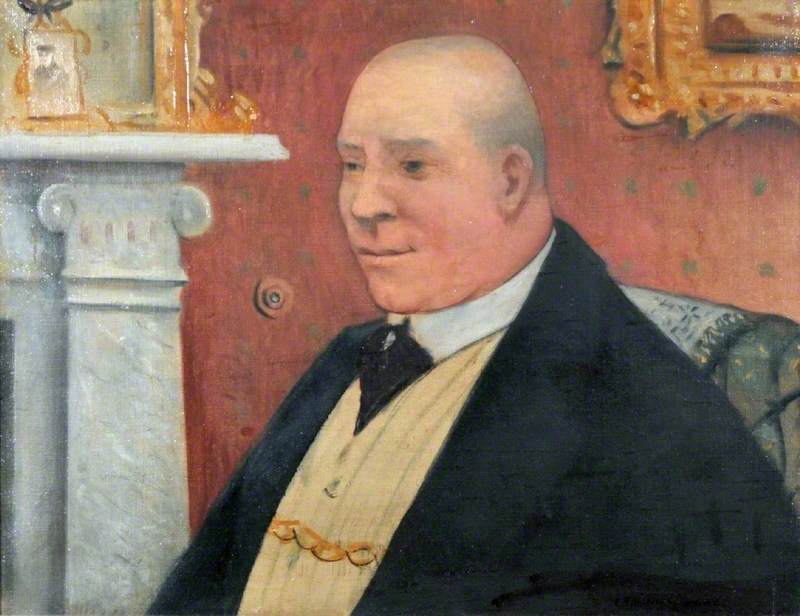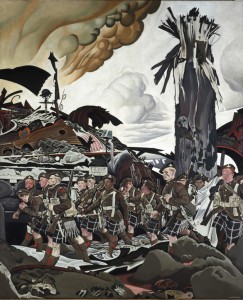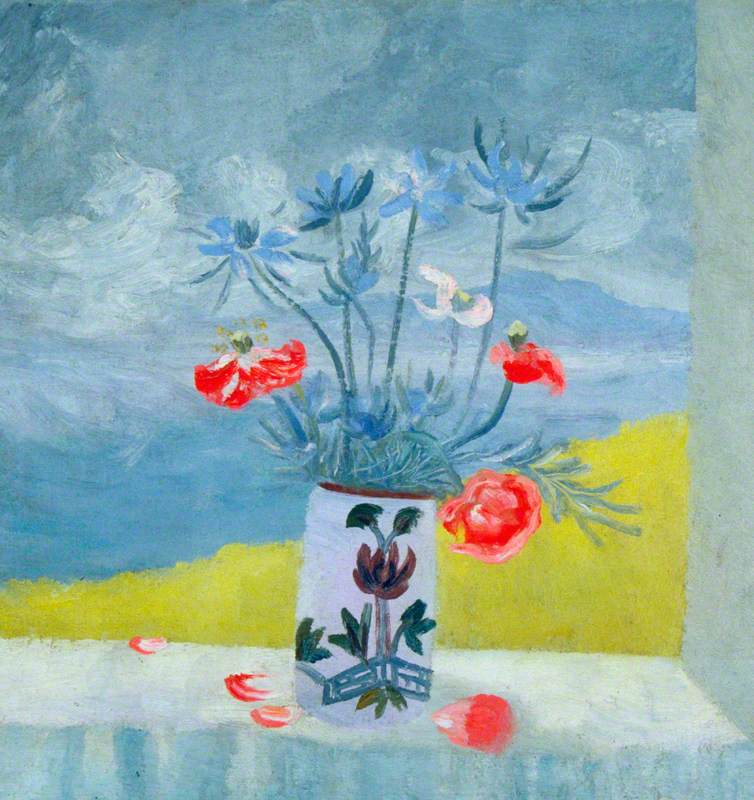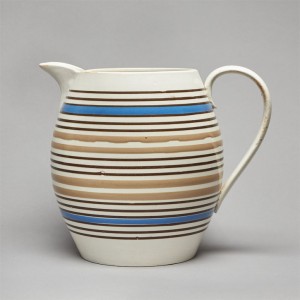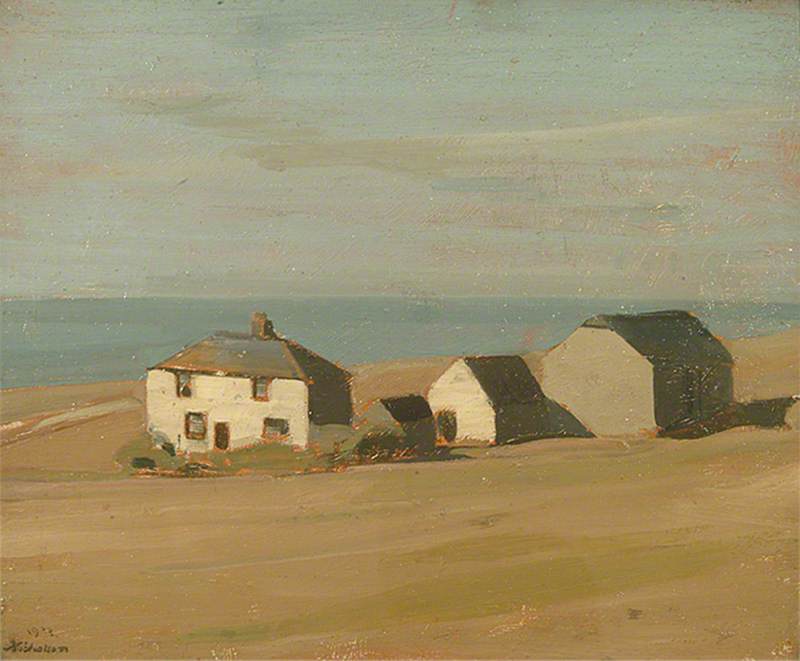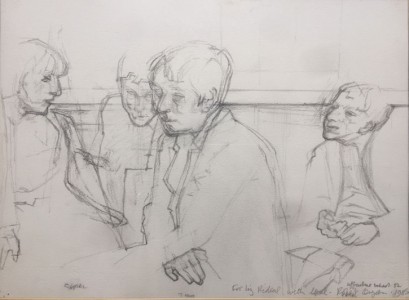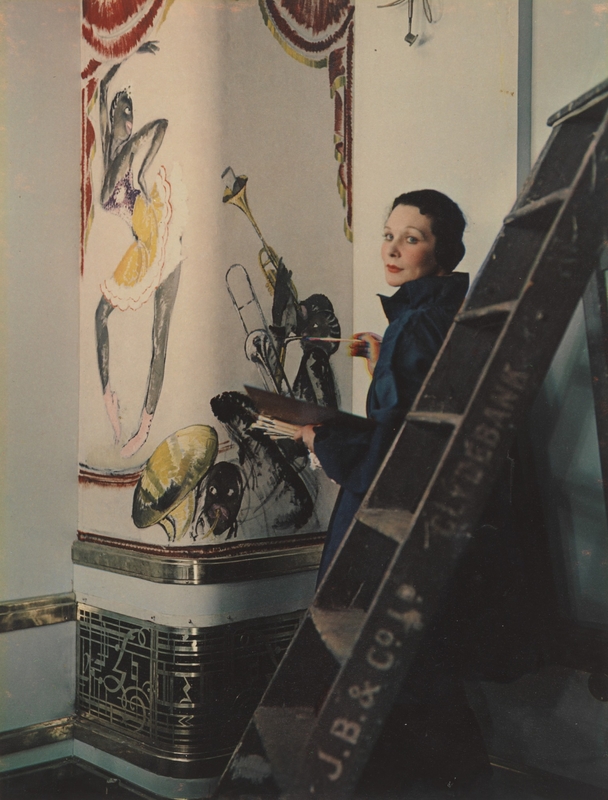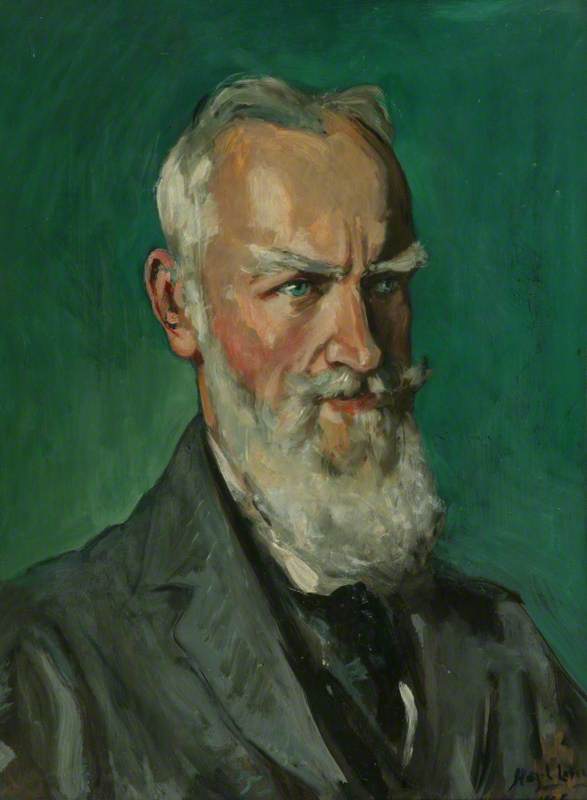Arnold Bennett’s play The Great Adventure opened to immediate success at the Kingsway Theatre, London, on 25th March 1913. Adapted from Bennett’s novel Buried Alive, the play was directed by Harley Granville Barker, with Henry Ainley and Wish Wynne in the leading roles of Ilam Carve and Janet Cannot. It ran for 673 nights, closing on 7th November 1914. Some reviewers found the play too long, causing Bennett to reflect that the first performance 'finished at 11.40 and thus made the critics cross'.
Bennett saw his first public performance of the play on 29th March, recording that the 'House held £125. [J. M.] Barrie with an adopted son on either side was there and he never laughed. C. K. Shorter in a box opposite roared nearly all the time. Wish Wynne a genius. I formed the opinion that there was a goodish run in the play.’ Even by early April, the play was making money; Bennett noted ‘Receipts of Great Adventure at Kingsway mounting up. Which inspired me somewhat.'
The plot of The Great Adventure centres on a famous artist, Ilam Carve, 'the finest colourist since Titian'. Carve is a mystery to the public, but is painfully shy and uncomfortable with his success. When his valet Albert Shawn dies suddenly, Carve uses the opportunity to disappear, pretending that Carve has died and that he is Shawn. He marries Janet Cannot who Shawn had been corresponding with through a matrimonial agency. Carve starts to paint again and produces a portrait of Janet, which he gives to her as a present for their second wedding anniversary. His paintings are discovered by an art dealer, Ebag, who tracks Carve down at his house:
EBAG. (Catching sight of Janet's portrait.) Pardon me. May I look?
JANET. Oh, do!
EBAG. A brilliant likeness.
JANET. Who of?
EBAG. Why, madam—yourself? The attitude is extraordinarily expressive. And if I may say so (glancing at CARVE) the placing of the high lights—those white sleevelets—what d'you call them?
JANET. Why! Those are my cooking-sleeves!
EBAG. (Quietly.) Yes—well—it's genius—mere genius.
Albert Shawn is accused of being a bigamist and Carve is forced to prove his real identity.
The painting of Janet appears in the play at the beginning Act III and can be seen throughout Act IV on the wall of Lord Alcar’s study. Although this was a prop, the painting was produced for the play by the celebrated artist William Nicholson. Nicholson had an interest in the theatre and produced designs for several plays during his career, including the original production of Peter Pan in 1904. He was a successful portraitist, with many celebrity sitters, but is also well known for his still life works.
The painting’s sitter, Wish Wynne (1882–1931), first went on stage at the age of 12, in the 1894 Drury Lane Christmas pantomime, Dick Whittington. At the age of 17, she toured in the title role of Trilby, having already achieved a long list of dramatic successes. She adopted the music hall profession in 1910, quickly gaining great popularity. The Great Adventure was her first West End straight part. Wynne was also popular on the radio, notably with her fairy stories, told in the character of a Cockney girl, which included references to contemporary celebrities and events. Wynne’s obituary in the Sydney Morning Herald in 1931 recorded that 'Her songs were really chats with the audience across the footlights, endowed with wit and a remarkably subtle sense of character, so that the types she portrayed really lived before the eyes of her audiences.'
Two years after the successful London run of The Great Adventure, Arnold Bennett visited Nicholson in his studio, recording the meeting in his diary on 17th March 1916: 'Thursday morning, long séance at barber’s. Then to W. Nicholson’s. He was in a black leather jacket, covered with paint. He gave me the portrait of Wish Wynne that was used in the production of The Great Adventure. He showed me some most ingenious ‘still lifes’, and Eric Kennington’s biggest war picture – very striking.'
This is the only reference to Bennett owning the portrait of Wish Wynne as Janet Cannot. He was well acquainted with many contemporary artists, buying their works and commenting on exhibitions and paintings for his wide readership. It is known that he owned works by Modigliani, John Currie and C. R. W. Nevinson.
The painting remained in Arnold Bennett’s ownership until his death in 1931. It was sold at a sale of Bennett's effects at Beaux Arts Gallery in 1931 and then donated to Nottingham City Museums and Galleries in 1933 by a Miss Helen Shipstone.
Katey Goodwin, Art UK Head of Research & Digitisation and Project Manager for The Sculpture Project
